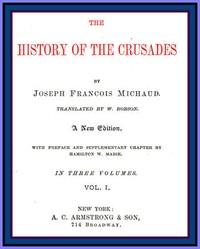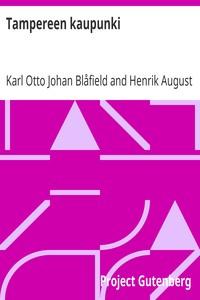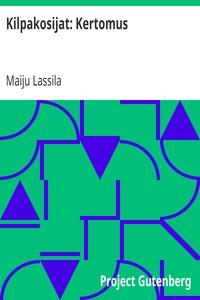Read this ebook for free! No credit card needed, absolutely nothing to pay.
Words: 206220 in 31 pages
This is an ebook sharing website. You can read the uploaded ebooks for free here. No credit cards needed, nothing to pay. If you want to own a digital copy of the ebook, or want to read offline with your favorite ebook-reader, then you can choose to buy and download the ebook.


: The History of the Crusades (vol. 1 of 3) by Michaud J Fr Joseph Fr Robson William Translator - Crusades
INTRODUCTION TO THE HISTORY OF THE CRUSADES xv
FIRST CRUSADE.
Immense armies collected in various parts of Europe--Peter the Hermit chosen general of the crusade--Opposed by the Hungarians and Bulgarians--Semlin--Nissa--The Crusaders reach Constantinople--Alexius Comnenus--Rapacity and cruelties of the Crusaders--Their defeat and slaughter-- Fresh armies sent from Europe--Their distinguished leaders --They wage war against the Greeks--Alliance of Godfrey de Bouillon with Alexius of Constantinople--Wretched situation of the remains of Peter's army in Bithynia--The Turkish power--Kingdom of Ezeroum--Siege of Nice--Battle of Gorgoni--The Turks defeated by the Crusaders--Sultan of Nice desolates the country--Antiochetta--Iconium--Tarsus captured by Baldwin--His conflicts with Tancred--Capture of Alexandretta and Edessa by the Crusaders--They arrive in Mesopotamia pp. 61-125.
SECOND CRUSADE.
THIRD CRUSADE.
HISTORY
OF
THE CRUSADES.
A.D. 300-1095.
FROM the earliest ages of the Church, a custom had been practised of making pilgrimages to the Holy Land. Judea, full of religious remembrances, was still the promised land of the faithful; the blessings of heaven appeared to be in store for those who visited Calvary, the tomb of Jesus Christ, and renewed their baptism in the waters of the Jordan. Under the reign of Constantine, the ardour for pilgrimages increased among the faithful; they flocked from all the provinces of the empire to worship Jesus Christ upon his own tomb, and to trace the steps of their God in that city which had but just resumed its name, and which the piety of an emperor had caused to issue from its ruins. The Holy Sepulchre presented itself to the eyes of the pilgrims surrounded by a magnificence which redoubled their veneration. An obscure cavern had become a marble temple, paved with precious stones and decorated with splendid colonnades. To the east of the Holy Sepulchre appeared the church of the Resurrection, in which they could admire the riches of Asia, mingled with the arts of Greece and Rome. Constantine celebrated the thirty-first year of his reign by the inauguration of this church, and thousands of Christians came, on occasion of this solemnity, to listen to the panegyric of Christ from the lips of the learned and holy bishop Eusebius.
St. Helena, the mother of the emperor, repaired to Jerusalem, at a very advanced age, and caused churches and chapels to be built upon Mount Tabor, in the city of Nazareth, and in the greater part of the places which Christ had sanctified by his presence and his miracles. From this period, pilgrimages to the Holy Land became much more frequent. The pilgrims, no longer in dread of the persecutions of the Pagans, could now give themselves up, without fear, to the fervour of their devotion; the Roman eagles, ornamented with the cross of Jesus Christ, protected them on their march; they everywhere trampled underfoot the fragments of idols, and they travelled amidst the abodes of their fellow-Christians.
When the emperor Julian, in order to weaken the authority of the prophecies, undertook to rebuild the temple of the Jews, numerous were the prodigies related by which God confounded his designs, and Jerusalem, for that attempt even, became more dear to the disciples of Jesus Christ. The Christians did not cease to visit Palestine. St. Jerome, who, towards the end of the fourth century, had retired to Bethlehem, informs us in one of his letters that pilgrims arrived in crowds in Judea, and that around the holy tomb the praises of the Son of God were to be heard, uttered in many languages. From this period, pilgrimages to the Holy Land were so numerous, that several doctors and fathers of the Church thought it their duty to point out the abuses and danger of the practice. They told Christians that long voyages might turn them aside from the path of salvation; that their God was not confined to one city; that Jesus Christ was everywhere where faith and good works were to be found; but such was the blind zeal which then drew the Christians towards Jerusalem, that the voice of the holy doctors was scarcely heard. The counsels of enlightened piety were not able to abate the ardour of the pilgrims, who believed they should be wanting in faith and zeal, if they did not adore Jesus Christ in the very places where, according to the expression of St. Jerome, the light of the gospel first shone from the top of the holy cross.
Free books android app tbrJar TBR JAR Read Free books online gutenberg
More posts by @FreeBooks

: Tampereen kaupunki Muisto Sen Satavuotis-Juhlastansa Lokakuun 1. päivänä 1879 by Bl Field Karl Otto Johan Reinholm Henrik August - Tampere (Finland) History


: A Middy's Recollections 1853-1860 by Montagu Victor Alexander - Great Britain. Royal Navy Biography; Montagu Victor Alexander 1841-1915






